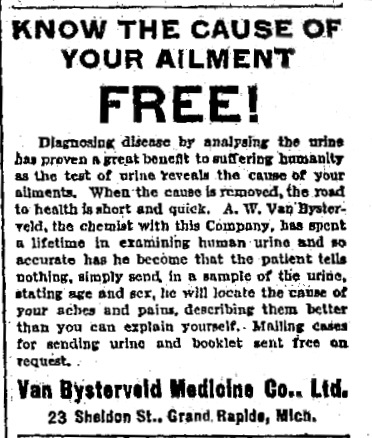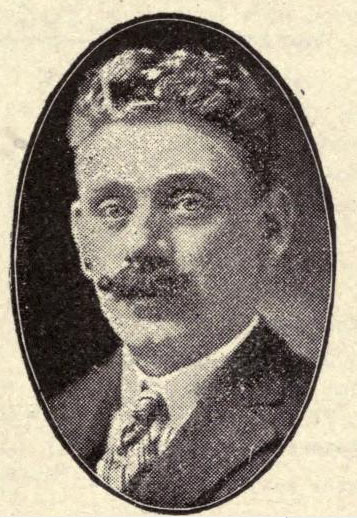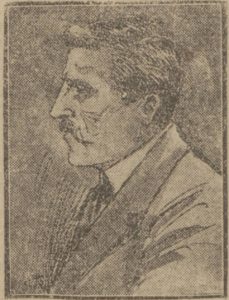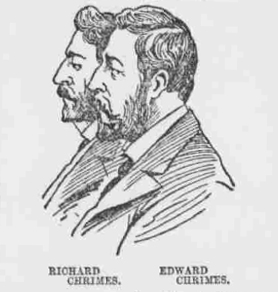 Advertisement from The Pomeroy Herald, Iowa, 27 January 1910
Advertisement from The Pomeroy Herald, Iowa, 27 January 1910
Centuries after the figure of the ‘pisse-prophet’ had descended into the realms of quackery and ridicule, a modern kind of urine analyst popped up in Grand Rapids, Michigan.
In the early 20th century, scientific urine tests were part of mainstream medical practice, so there was not necessarily anything dodgy about the activities of Antonius W. Van Bysterveld. As it turned out, however, he was every bit as dubious as Dr Cameron of a hundred years before.
There are several red flags in Van Bysterveld’s advertising. The 1910 ad above makes the arcane suggestion that his skills work even when the patient ‘tells nothing’. Other ads described his method as ‘a careful and secret process handed down generation after generation and most carefully guarded by the old families of Europe.’ There is some indication in the advertising that the analysis involved dripping chemicals into the urine sample, but beyond that it is kept under wraps. After diagnosis, the doctor would prescribe his own medicines at a cost of $1.25 a week.
Writers from the American Medical Association, in Nostrums and Quackery (1911) rather uncharitably passed comment on Van Bysterveld’s appearance:
Mr. Van B seems, from his picture, to be a man of mediocre intelligence who runs to naturally curled hair and an artificially curled mustache.
Van Bysterveld can’t have been the only fellow ever to have curled his ‘tache for a publicity pic, and however mediocre he might have appeared, he deserves some admiration for the sheer number of scrapes from which he managed to extricate himself.
In February 1903 he was prosecuted and fined for practising medicine without a licence, but went straight back into business with a dodgy but fully qualified medic, G. R. Adkins, who was permitted by law to write prescriptions. Within two months, Dr Adkins was arrested too, for writing a death certificate without ever having seen the deceased. Van Bysterveld bounced back and started seeing patients again, brazenly advertising himself as ‘The Wonder Doctor’ – though, if challenged, he would say that he was a chemist and did not claim to have medical qualifications. In March 1904, however, he discovered that quackery can be as dangerous for the quack as for the patient.
Fifteen-year-old Katie Bass had been consulting him for epilepsy for 3 months, when she alleged that he mistreated her. Although a report in the Chicago Tribune is coy about the details, a letter to Van Bysterveld from her furious father implies that it was a sexual assault:
You have laid the whole being of that pure, good girl, with all its enjoying capacities and angelic virtues, in ruin. You have converted all her life’s joys into sorrow; dressed all nature in mourning; hung her very sun and moon in gloom, and made her say with poor Charlotte Temple, and all others betrayed:
“Thou glorious orb, supremely bright,
Just rising from the sea
To clear all nature with thy light,
What are thy beams to me?”
I am only waiting for next Tuesday to meet you face to face.
John Bass applied for a warrant for Van Bysterveld’s arrest, but the judge refused to issue it unless Katie made a complaint in person. Katie, however, was too ill to go to the court, so Mr Bass took the matter into his own hands. He grabbed his revolver and set off in search of the doctor.
‘I am sorry I did not kill him,’ Bass later announced to the judge. ‘He laughed in my face when I upbraided him, told me she was crazy, and that no judge would believe the word of a lunatic. Then I shot him.’
Van Bysterveld sustained a gunshot wound to his leg but quickly recovered and does not appear to have been found guilty of the alleged assault, for he was soon back advertising his services. In 1906 he was again charged with practising medicine illegally, when a young woman died shortly after having taken medicine prescribed by him. And once again this had little effect on his business. He was still going strong in 1911 when the A.M.A. decided to test him out.
They made a mixture of water, ammonia, pepsin and anilin dye, and got three volunteers to send samples off to Van Bysterveld. Three different diagnoses came back, all consisting of a paragraph of vague analysis that could apply to anyone:
1. Careful examination of the urine shows there is too much acid in the blood, which will cause a rheumatic condition, the back is weak, and you will have a tired nervous feeling most of the time.
2. Careful examination of the urine shows the circulation of the blood to be very poor, the liver is not working properly, which will cause gas in the stomach and bowels and will effect (sic) the heart, you have caught a little cold which has settled in the back and stomach and you will have a nervous feeling.
3. Careful examination of the urine shows you are losing too much albumin in the urine, which will cause the back and kidneys to be weak, and there is a catarrhal condition of the stomach and bowels, and you will have a tired nervous feeling most of the time.
In an even more blatant test, the A.M.A sent in samples consisting of 95% water and 5% sugar. They got back two diagnoses using a mix of statements from the previous ones, and no mention at all of the dangerous glucose levels.
The A.M.A. unreservedly condemned Van Bysterveld’s practice as a ‘fraud and a swindle’ and a ‘picturesque, but vicious humbug’. As for the Wonder Doctor, however, he ignored them and cheerfully carried on treating his patients.
.
.




Lovely post. Thanks Caroline.
Screening tests are a bit more sophisticated these days, but still include urinalysis:
http://www.ihealthltd.com/individualpackages.html
The marketing of screening tests is rather more sophisticated, but their utility may not have improved that much since van Bysterveldt’s day:
http://www.margaretmccartney.com/blog/?p=864
“Bijster” is Dutch for “very”, so it is perhaps not surprising that van Bysterveld was good at bigging up his services.
Thanks, Michael. At least Van Bysterveld’s initial tests were free – that Ultimate screening package in the link doesn’t look very healthy for the wallet!